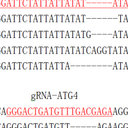Bilateral pulmonary artery banding for resuscitation in high-risk, single-ventricle neonates and infants: a single-center experience.
Keywords
Abstract
OBJECTIVE
Bilateral pulmonary artery banding with or without ductal stenting has been performed as a resuscitative intervention for patients considered at too high risk for conventional single ventricle palliation. The purpose of the present study was to determine the outcomes using this strategy.
METHODS
We performed a retrospective review of 24 patients with single ventricle anatomy who were younger than 3 months who had undergone bilateral pulmonary artery banding and ductal stenting or maintenance of prostaglandin E(1) from January 2007 to October 2011 at our institution. The echocardiographic, angiographic, operative, and clinical data were reviewed. Follow-up data were available for 100% of the patients.
RESULTS
All 24 patients (13 male patients) underwent bilateral pulmonary artery banding at a median age of 8 days (range, 2-44 days). Their gestational age was 38 weeks (range, 27-41 weeks), and their weight was 3.01 kg (range, 1.5-4.4 kg). The cardiac diagnoses included hypoplastic left heart syndrome/variant hypoplastic left heart syndrome in 18, unbalanced atrioventricular canal in 4, and tricuspid atresia in 2. In the hypoplastic left heart syndrome group, 9 (50%) had an intact or a highly restrictive atrial septum requiring open (n = 1) or transcatheter (n = 8) atrial septostomy with or without atrial stent placement (n = 4). Ductal stenting was performed in 14 patients, and 10 patients were continued with prostaglandin E(1). Fifteen patients (62.5%) survived to undergo a Norwood procedure (n = 7), comprehensive stage 2 (n = 1), or primary cardiac transplantation (n = 7). Of the 9 who died, support was withdrawn in 5 because of a contraindication to transplantation, 1 because of sepsis and/or multiorgan system failure, and 1 for whom palliative care was desired. Two died awaiting transplantation. All 7 patients who underwent a conventional Norwood operation survived to discharge, and 6 of the 7 (85.7%) underwent bidirectional Glenn shunt placement. Of the 7 patients who underwent transplantation, 6 (85.7%) were alive at a median follow-up of 33.6 months.
CONCLUSIONS
Bilateral pulmonary artery banding with or without ductal stenting is an effective method of resuscitation for high-risk neonates and infants with a single ventricle, allowing for reasonable survival to conventional first-stage palliation or primary transplantation.


